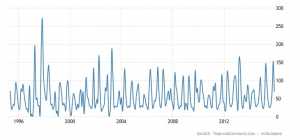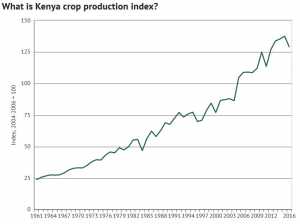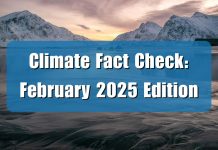Foreign Affairs magazine claims the West owes Kenya a “climate debt” due to crop failures and livestock shortages caused by climate change. However, nothing could be farther from the truth. Kenyan crop production is in the midst of long-term, consistent growth, with records being set in most recent years. Similarly, the United Nations documents that Kenyan livestock production is experiencing spectacular growth, with livestock production expected to increase another 90% by the year 2050. If there is any debt regarding Kenya and climate change, Kenya owes the West a debt for creating constantly improving crop and livestock conditions.
According to the article, “Growing up in a pastoral community in northern Kenya gave me a certain clarity about the climate crisis, a clarity born not from abstract understandings but from visceral experience. In 2000, a drought killed much of my father’s cattle herd and destroyed our neighbors’ livelihoods …. In northern Kenya, droughts used to occur once every ten years. But in the last few decades, their frequency and severity have increased thanks to climate change. Droughts now occur once every two to three years.”
This begs three questions:
- Do the data show decreasing Kenyan rainfall and increasing drought?
- Is Kenyan crop production declining?
- Is Kenyan livestock production declining?
The chart below is produced by Trading Economics, utilizing World Bank information. The chart reflects 100 years of rainfall data in Kenya. It is difficult to discern any long-term precipitation trends in either direction.

The next chart, below, shows Kenyan rainfall during the past 25 years. Again, there appear to be no long-term trends one way or another.

The next chart, below, reflecting World Data Atlas figures, shows trends in Kenyan crop production. Kenya is clearly enjoying substantial and consistent increases in annual crop production. Indeed, more often than not during this century, each year produces a new crop production record.

Finally, the International Livestock Research Institute (ILRI) reports “Kenya’s livestock sector is primed to grow exponentially over the next three decades and anchor the country’s food sufficiency….”
“The [United Nations Food and Agriculture Organization] estimated that by 2050 the cattle population in Kenya will have increased by 90 percent while milk and beef production will rise to 17,000 tonnes and 2,000 tonnes, respectively,” according to the ILRI.
By any measure, as the world modestly warms and atmospheric carbon dioxide fertilizes crops and vegetation, crop production and livestock production are prospering. Rather than the West owing Kenya a climate debt, Kenya appears to owe the West a climate debt.
And if the author’s family cannot succeed in cattle raising during such ideal conditions, perhaps they are just bad at cattle farming. But it is easy to blame one’s own personal failings on climate change.


















What proof is there that increasing drought is caused by “climate change”, especially since there is no overall climate change? The biggest factor is probably the increase in CO2, which enhances crop growth. What we urgently need is an increase in CO2, from its current close-to-disaster level – a doubling would be very welcome.